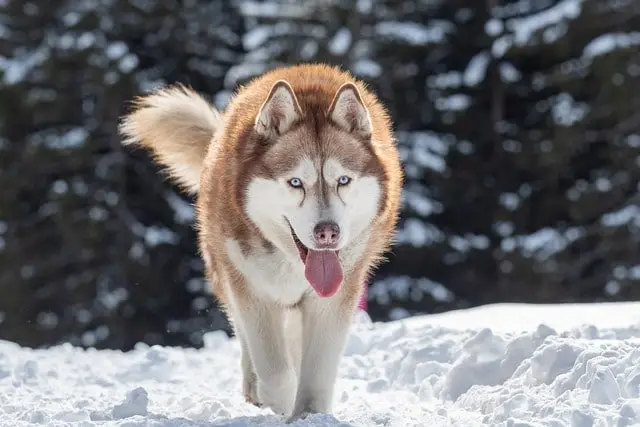Blue Heelers, also known as Australian Cattle Dogs. This is a famous breed of dog. Who are quite famous for their intelligence, loyalty, their immense energy and lively mood. For owners, managing these dogs is no less than a challenge. Many owners are quite worried about their dogs and wonder when their Blue Heeler will calm down. And how to help them reach a more manageable level of energy. In this article, we will discuss about the blue heeler in general. And we also provide behavioral training tips to help our Blue Heelers reach more balanced energy levels.
When Do Blue Heelers Calm Down?
As we know, Blue Heelers are known for their high energy levels. And they can remain active and playful well into their senior years. It is important to remember that their energy levels are age-appropriate and as they mature they will gradually decrease. But the point to consider is that in the life of a blue heeler, there are different milestones of their age. Which could indicate when the Blue Heelers might start to calm down.
- Puppyhood
- Adolescence
- Adulthood
- Senior Years.
Puppyhood
Blue heeler dogs are full of energy like other dogs. These dogs are very curious and playful. Therefore. They require a lot of attention and exercise. It is very important to establish a routine for your Blue Heeler dog and provide him with sufficient mental and physical stimulation. So that we get great help in burning their energy in a positive way so that it stays calm.
At around 6-12 months of age, Blue Heeler puppies may begin to show signs of calming down. The sign of which these dogs start sleeping for a long time. Which can start to become less destructive. If they are sleeping more, it does not mean that they are completely calm. But they may still need a lot of exercise and attention, which we have to do with them.
Adolescence
As Blue Heelers enter adolescence, usually between 6-18 months, they may begin to test boundaries and become more independent. In fact, this is their limit-testing behavior It can be lead to an increase in their energy and challenging behavior. During this stage it is important to keep continue providing their training and exercise to calm them down. its help to your Blue Heeler grow into a well-behaved adult.
Adulthood
Most Blue Heelers will reach full physical maturity between in 1-2 years of age. This is when they can start to calm down and become more manageable. However, keep in mind that their energy levels it will be still higher than to other dog breeds energy levels. And it is important to keep them happy and healthy life even at this age daily exercise should be included in their daily routine.
Senior Years
Blue Heelers can live up to 15 years, and as they enter their senior years, they may begin to slow down and become less active. Even after they reach their prime age, they will still need to daily exercise and mental stimulation to keep them a healthy and happy life. Even if they don’t get old.

Tips for Behavior Training to Help Your Blue Heeler Calm Down
While Blue Heelers may never fully calm down, there are steps you can take to help them reach a more manageable energy level. but Here are some tips to you for behavior training, I think they will help your Blue Heeler to calm down.
Establish a Routine
Blue Heelers thrive on routine and strict structure. If we establish a daily routine for our Blue Heelers, they will feel more secure. And thus we can help reduce their anxiety. Which can contribute to their high energy levels and it can be coins. Make sure to incorporate exercise, training, and playtime into their routine on a daily basis. Help burn their energy in a positive way when they are engaged in exercise and training.
Provide Mental Stimulation
Blue Heelers are a breed of intelligent dogs. And they desperately need mental stimulation to keep them busy and prevent boredom. Long walks, walks, hikes, or engaging in dog games such as agility can include puzzle toys, training sessions, and games that challenge and engage their minds. Remember a tired dog is a content dog. Too much mental stimulation can tire your Blue Heeler and lower their energy levels.
Exercise Daily
Blue Heelers are a working breed and working people prefer it. If you want they are to be physically and mentally healthy. So, therefore, it is very important to create an exercise environment for them. Did you know that a tired blue heeler is a silent blue heeler? Yes, if you want to keep him calm, be sure to provide them plenty of opportunities for exercise. This can include taking them for walks, runs, hikes, and play. It is important to note that Blue Heelers have a high hunting drive for small animals. And they should always be kept on a leash or in a fenced area. if you can do that So that they can avoid to chasing small animals.
Use Positive Reinforcement Training
There is no doubt that Blue Heelers respond well to positive reinforcement training. Which includes good behavior, and rewarding good behavior with praise and love. If you give this type of training to your Blue Heelers, they will get a lot of help in controlling their energy. Besides that. This training can help them learn to focus their attention on you even this makes it easier for you to manage them.
Be Consistent
When it comes to behavior training for Blue Heelers, never forget consistency, because this is the key to learning. Always set rules and boundaries and be sure to stick to them. Because inconsistency can confuse your blue heeler and it can lead to any unwanted behavior
Seek Professional Help
Good thing if you’re struggling to manage your Blue Heeler’s energy level and behavior. However seeking professional help from a dog trainer or behaviorist can be beneficial. They can provide personalized training and advice to help your Blue Heeler reach a more manageable energy level.




Pingback: Australian Cattle Dog Behavior Issues: 6 Common Challenges - Pet n Dog
Pingback: Australian Cattle Dog Biting Problem: Understanding, Managing, and Preventing - Pet n Dog
Pingback: 8 Signs a Pitbull Will Attack - Pet n Dog